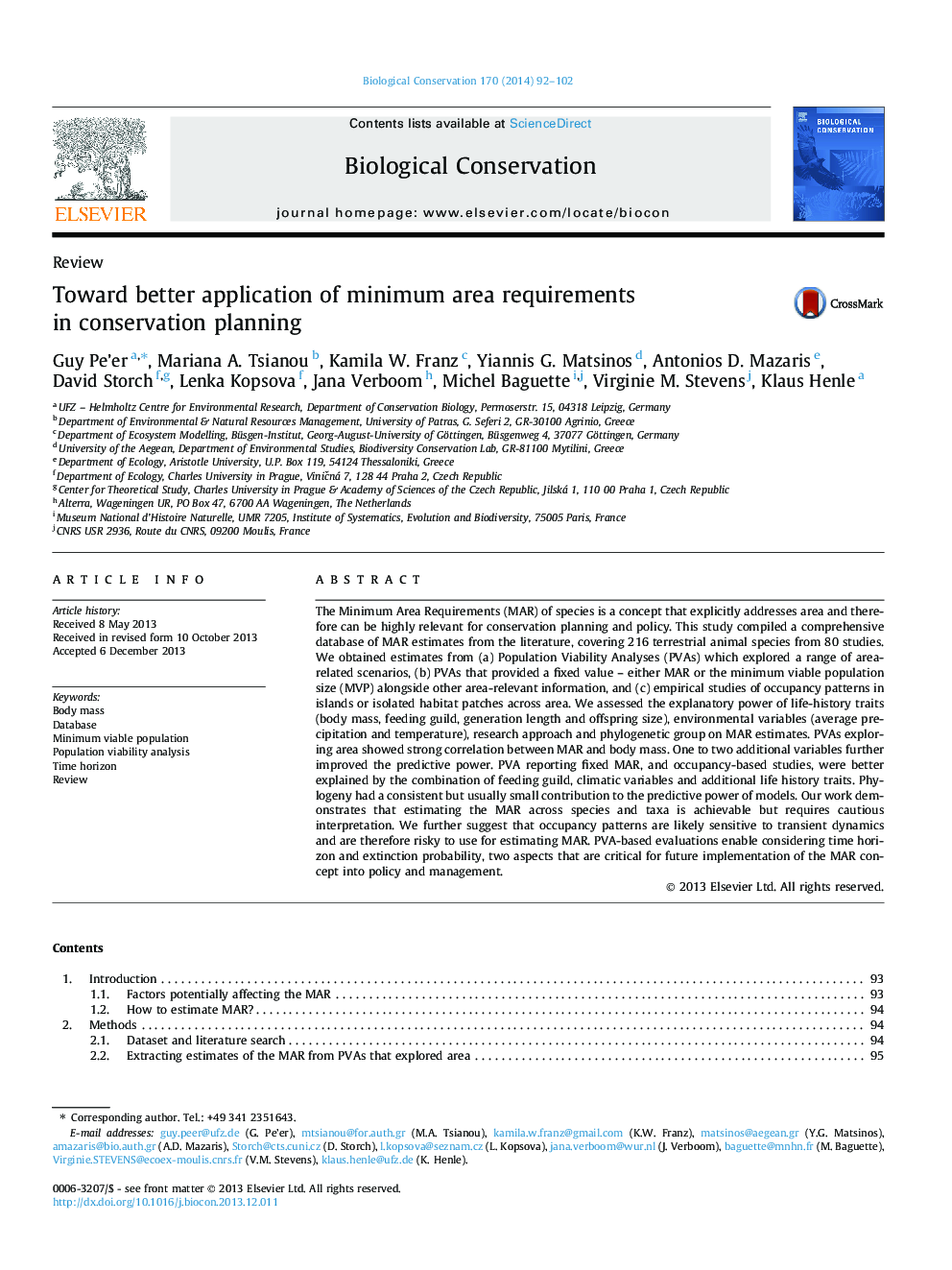| Article ID | Journal | Published Year | Pages | File Type |
|---|---|---|---|---|
| 6300112 | Biological Conservation | 2014 | 11 Pages |
Abstract
The Minimum Area Requirements (MAR) of species is a concept that explicitly addresses area and therefore can be highly relevant for conservation planning and policy. This study compiled a comprehensive database of MAR estimates from the literature, covering 216 terrestrial animal species from 80 studies. We obtained estimates from (a) Population Viability Analyses (PVAs) which explored a range of area-related scenarios, (b) PVAs that provided a fixed value - either MAR or the minimum viable population size (MVP) alongside other area-relevant information, and (c) empirical studies of occupancy patterns in islands or isolated habitat patches across area. We assessed the explanatory power of life-history traits (body mass, feeding guild, generation length and offspring size), environmental variables (average precipitation and temperature), research approach and phylogenetic group on MAR estimates. PVAs exploring area showed strong correlation between MAR and body mass. One to two additional variables further improved the predictive power. PVA reporting fixed MAR, and occupancy-based studies, were better explained by the combination of feeding guild, climatic variables and additional life history traits. Phylogeny had a consistent but usually small contribution to the predictive power of models. Our work demonstrates that estimating the MAR across species and taxa is achievable but requires cautious interpretation. We further suggest that occupancy patterns are likely sensitive to transient dynamics and are therefore risky to use for estimating MAR. PVA-based evaluations enable considering time horizon and extinction probability, two aspects that are critical for future implementation of the MAR concept into policy and management.
Related Topics
Life Sciences
Agricultural and Biological Sciences
Ecology, Evolution, Behavior and Systematics
Authors
Guy Pe'er, Mariana A. Tsianou, Kamila W. Franz, Yiannis G. Matsinos, Antonios D. Mazaris, David Storch, Lenka Kopsova, Jana Verboom, Michel Baguette, Virginie M. Stevens, Klaus Henle,
